
Christmas—or rather, Friday, November 5—came early yesterday when the long-awaited version 2.0 update to Animal Crossing: New Horizons was surprisingly released more than a full day ahead of schedule.
While much of the early hype surrounding the purportedly last major free content update focused on the return of Brewster and his café, much of the post-Direct hype focused on the return of Kapp’n and his boat.… Well, at least in this writer’s household.
And so, we were glad to see the same old Kapp’n again yesterday after such a long absence, but we were also delighted to notice a few small changes, inspiring us to share a couple of fun facts and fan theories about our personal favorite NPC from the Japanese side of Animal Crossing fandom—or, should we say, Dōbutsu no Mori fandom. That’s right, we’ve played over 500 hours (and counting) of both Tobi-Mori (Animal Crossing: New Leaf) and Atsu-Mori (ACNH) so you don’t have to!

Although you will, of course.
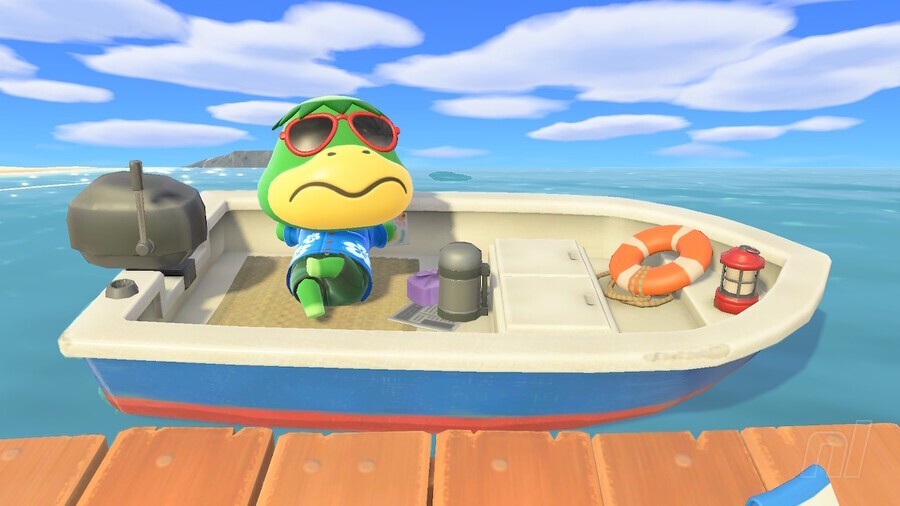
Fun Fact: He’s a kappa!
Unless you have a better-than-passing familiarity with Japanese culture, you can be forgiven for mistaking Kapp’n for a sea turtle when in fact he’s a kappa, a sometimes mischievous and other times malevolent creature from Japanese folklore.
Physically, kappa are often depicted as half-human, half-reptilian creatures of diminutive stature who possess tortoise-like carapaces on their backs and Friar Tuck-like bald spots on top of their heads. Indeed, if you doubt us about Kapp’n and his kin on Tortimer Island, the bald spots you can invariably find on top of their heads are a dead giveaway. Called sara (literally, “dishes” or “plates”), these bald spots are actually concave and hold small pools of water said to be the source of a kappa’s supernatural power.
Kappa are also said to haunt the streams and ponds (and even toilets) of Japan, where they either harmlessly prank or viciously attack their hapless victims. Conceivably, the legends about kappa could have served to scare children from playing near dangerous waters, but perhaps other aspects of their mythology are better left unexplained. More relevant to Kapp’n, however, kappa are reportedly fond of cucumbers and apparently associated with flatulence, which would go a long way toward explaining why Kapp’n so often sings about cucumbers and breaks wind mid-tune in Dōbutsu no Mori.
And as you have surely noticed by now, the name Kapp’n itself is a play on the word kappa. Well, the same holds true for his original moniker in Japanese, Kappei.
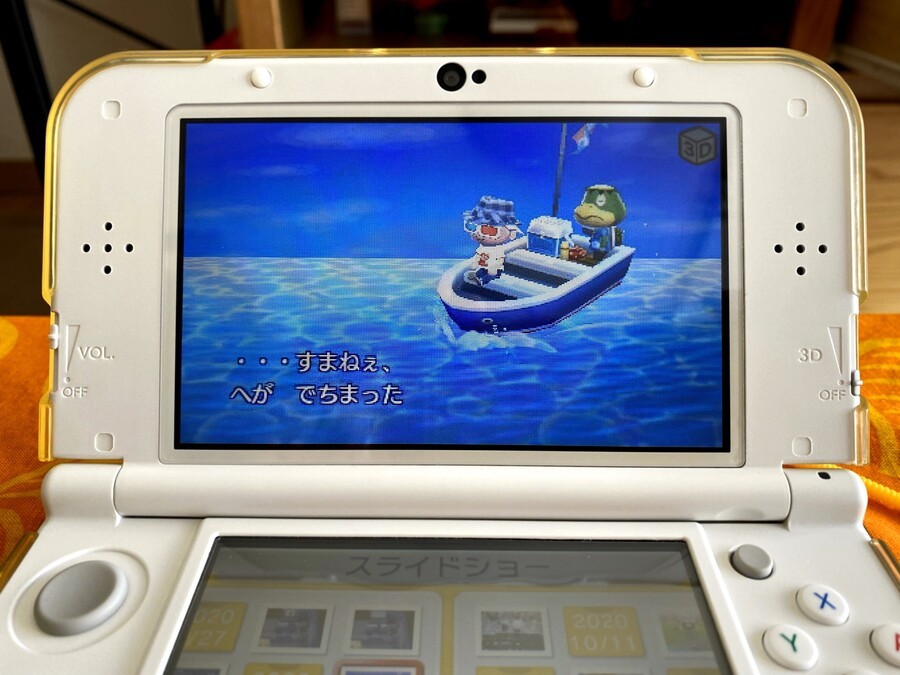
Fan Theory: He’s a crooner and a bumpkin!
Many Dōbutsu no Mori fans have drawn comparisons between Kappei and at least two celebrities, leading to speculation his character was inspired by one, the other, or perhaps an amalgamation of both.
First, some have noticed similarities between the sea shanties that Kappei sings and the songs that Yūzō Kayama crooned, especially his smash hit “Kimi to Itsumademo” (unofficially, “Forever with You”, above). Yūzō Kayama is a celebrated musician and actor whose dual career in music and film was roughly analogous to Elvis Presley’s, and although our household swears that his songs were the inspiration behind Kappei’s sea shanties, we’ll let your ears be the judge of that one.
Second, others have noticed similarities between Kappei in both dialect and name and an Aomori-based TV personality known professionally as Ina Kappei. The choice to crib Springfield’s Captain McCallister when localizing Kappei for the West was an inspired one, but in his native Japan, he speaks less like a seafaring pirate and more like a country bumpkin. In fact, Ina Kappei’s stage name itself is a play on inakappei, a slur that can translate as bumpkin or yokel.
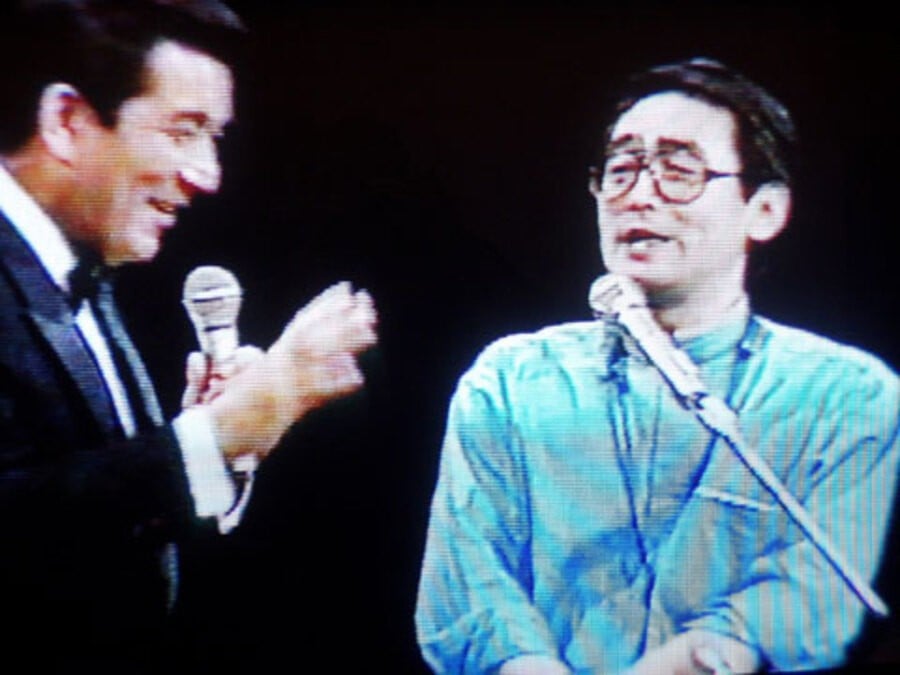
Fun Fact: He’s got a brand new flag!
In Tobi-Mori (ACNL), Kappei’s flag sported a boat’s wheel in white set against a simple checkered pattern in blue and red—a symbol as fitting as any for our beloved ferryman. In Atsu-Mori (ACNH), however, Kappei is now sporting a brand new flag on his boat.
At first glance, it appears as if Kappei’s new red and white flag depicts a mountain with the Sun. To be sure, the flag is bound to remind even some Western players of Hokusai’s Thirty-Six Views of Mt. Fuji, especially considering its most famous print can be donated to the museum within the game itself.
Nevertheless, if you’ve studied even a little Japanese, you’ll instantly recognize Kappei’s new flag not only as a volcanic mountain resembling Mt. Fuji but also as a clever rendition of a phonetic letter from one of two syllabaries used in the Japanese writing system—namely, the hiragana letter pe. Why the hiragana letter pe, you might reasonably ask? Well, because Kappei spells his name in hiragana, which finally brings us to our own personal fan theory….
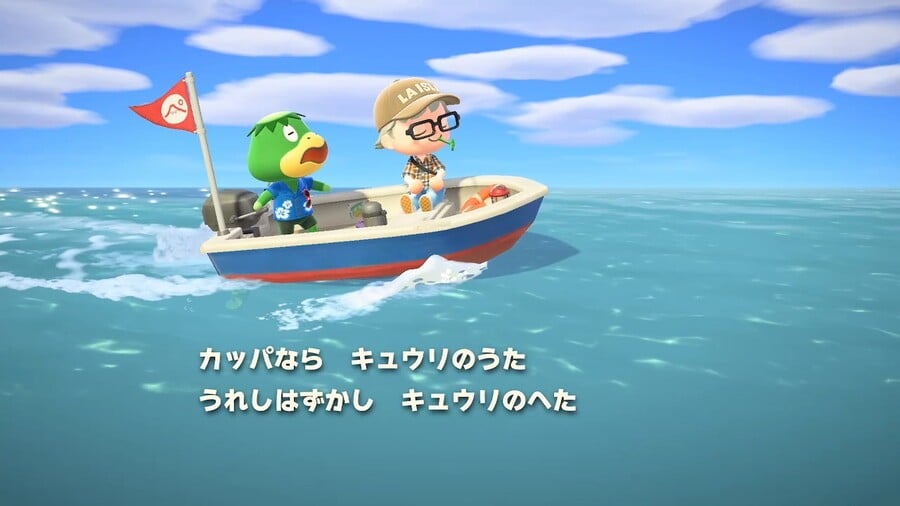
Fan Theory: Kapp'n is an elaborate fart joke!
Like most characters from Dōbutsu no Mori, Kappei’s name is a kind of wordplay, and it works on more than one level. On the first level, as we touched on above, Kappei is a combination of kappa and the masculine name ending -hei or -pei (as in the common names Kōhei or Junpei), giving us Kappei. On the second level, as we also alluded to above, Kappei might be a homage to Ina Kappei considering the dialect and name they both share. On the third level, Kappei might be a subtle fart joke as well. Try and bare with us for a spell.
it sounds reasonable that the same phonological process that transforms buu into puu could also transform hei into pei, making Kappei work as a combination of kappa and a wettish poot
When rendered as sound effects in manga, the more forceful buu or the softer (and possibly wetter) puu are the onomatopoeia of choice for conveying flatulence to the reader. These can appear arbitrarily elongated (as in buuuuuu) or in staccato bursts (as in puppuppu), and spelled in either hiragana or katakana for emphasis. And the creativity of Japanese artists doesn’t end there. For instance, a quiet whooshing sound can be captured with suu or combined with puu, giving us such colorful renditions as pusuuuu. Although we’re admittedly relying on our memory, we could swear we’ve seen at least one toot captured as hei. As amateur linguists, it sounds reasonable to us that the same phonological process that transforms buu into puu could also transform hei into pei, making Kappei also work as a combination of kappa and a wettish poot.
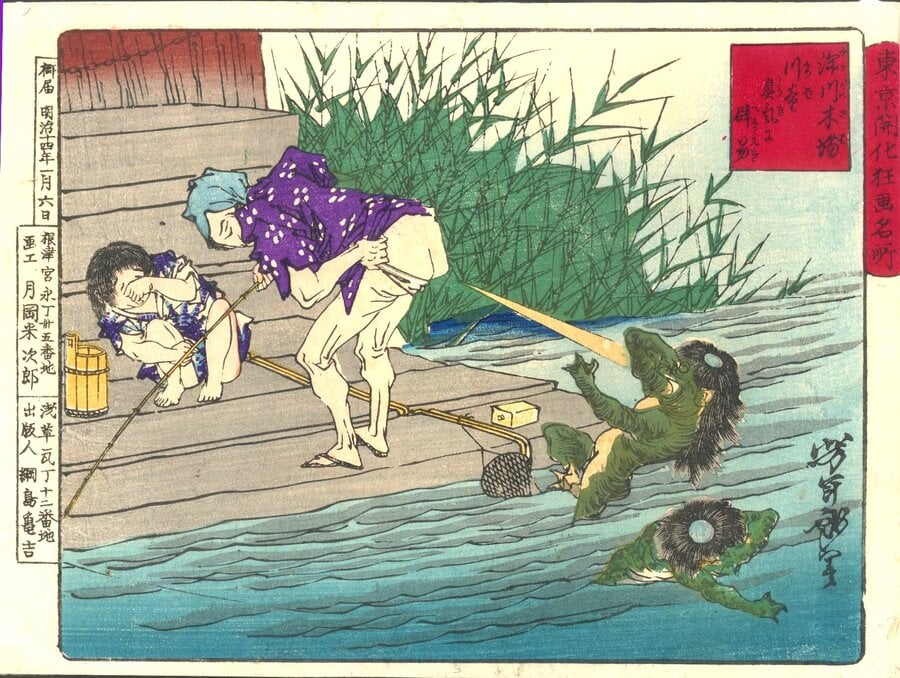
If it sounds like we’re reaching here, consider the facts that he is one word for a bottom-burp in the
dictionary and neppe is slang for somnambular flatulence. Perhaps less ubiquitous in colloquial speech than onara, he does appear in common expressions like he demo nai, which idiomatically translates as “trivial” but literally translates as “not even a fart.” Or, consider the related expression, kappa no he, which idiomatically translates as “a piece of cake” but literally translates as “a kappa’s fart”—hold on, a kappa’s fart…?!
With due respect to Yūzō Kayama and Ina Kappei, it would seem the expression kappa no he—on top of the strong and myriad associations between kappa and all things scatological to begin with—provided a third source of inspiration for the character Kappei.
So, the next time you see Kapp’n and his new flag in New Horizons, well… you can’t un-read this article now, can you?
Feel free to share your love, fun facts and fan theories about Kapp'n below.





Comments 29
This is genuinely the kind of dumb and silly content I love to see
I didn't realize how much I missed kappn until now
Would anyone even miss kapp’n’s fart jokes?
I heard that potty humor is the lowest form of comedy.
@Greatluigi Who did you hear that from? The fart police? I heard you can smell them before you hear them.
When someone gives you a hug, you should always fart, because it makes them feel strong.
That’s what Tortimer taught me.
Atleast its not lost due to being outright removed like genders male / female text at the choosing your gender at the beginning were in the English version.
@Tobiaku They were removed because the game just lets you pick a body type instead of tying it to pronouns. You can also have any hairstyle too. If anything, more was added as well as being more inclusive. It makes sense given Animal Crossing is probably the most popular Nintendo game for LGBTQ+ gamers.
Kappn is the sole reason I plane to come back to AC. His Amiibo sits on my desk every day.
@nessisonett Mainly used that example since it was in the same game. If I remember correctly other languages kept the genders. And despite their reasons, they still were removed from the game and therefor "lost" in the English version.
Whereas for example Xenoblade chronicles 2 "translating" 'super bikini armor' to 'fluffy bunny costume' is just botchered translation.
Or if this article is correct, the joke is lost to people outside of Japan due to the word kappa. Sorta the same as if Ace Attorney characters kept their Japanese names.
@WeltraumDreamer I mean yeah, I’m bi and I still use he/him but it’s not like I really mind if anyone uses ‘they’, no skin off my nose. It’s not that it isn’t correct, the T and Q and + can refer to people who use pronouns separate from the ones they were assigned at birth. I just don’t get why anybody would be that fussed since the game still lets you create whatever character you want.
@nessisonett um because movies that have fart jokes in em are usually hated by critics and audience’s?
@Greatluigi Shrek actually has an 84 Metascore. I was mostly joking though!
Japanese humour is 80% name puns and 20% toilet humour. I remember when I was first learning Japanese I would go see comedy shows as a way of getting comfortable with a wide range of inflections and variations in speed quickly and I would never get a single joke.
I still don't. That's not to say it's objectively worse then the humour I like, just that humour seems to be really hard to translate.
@WeltraumDreamer
It says "choose your preference". That fact that you (and most people) take that as 100% confirmation that what you are choosing is biological sex and gender identity is really telling, especially when you note it has no impact on normal gender indicators like what you can ware or how you can do your hair. I personally see it more as confirmation you will be genderless, so the pronoun use lines up. Also your hands are little circles and you don't have a nose ... you REALLY think there is a penis or vagina down there?
It's also a great opportunity to note that what you feel not seeing someone who represents you in the mirror in a video game is what every single LGBT+ person, NIS female, and non-white person feels in virtually every game. Now I'm not going to check your comments and this isn't a personal attack, just something I hope makes you think about it ... but I'm guessing you don't have a lot of comments pointing out how a game forces you to be white or straight and you wish they would change that so "everyone can be happy". Are you sure you don't really mean you just want a given group of people to be happy? The one you are in, prehaps?
That's why you should always name your character "I farted". So that Kapp'n would always go "Hello, I farted!"
@PBandSmelly
Oh, you don’t want to remove the small anus ball—that would spell certain death…!
Seriously, though, whether or not the “pe” in “Kappei” was a deliberate fart joke because “he” (fart) can turn into “pe” as in “neppe” (a sleep fart) and so on, I had no idea just how much kappa mythology inspired Kappei’s sense of humor until I did my due diligence researching this article—I learned far more than I could include even by linking to it 😅
Apropos of nothing, the Dream Land from Kirby games is named Pupupu Land in Japan.
Something likely obvious but since it wasn't called out specifically, he->pe would be a case of rendaku(sequential voicing) changing the consonant of the latter part to lend itself to easier pronunciation. So finding compounds with っへ(-hhe-) would be pretty rare.
As for boys or girls, if it helps be inclusive, then imo the current compromise is fine.
For what it's worth, there was a tutorial choice cut completely outside of Japanese (how do you pronounce 島), making it impossible to set if you don't start playing in Japanese. And that gets a lot less attention.
According to dataminers, there supposedly is still a gameplay difference between 'boy' and 'girl', being that animals won't gift you clothes intended for the other gender. (Haven't tried confirming/checking it myself though, mind)
huh. that's something you don't read everyday. interesting nonetheless how things get lost in translation besides the difference in cultures
@bluesun
Right you are. For the sake of simplicity, I didn’t introduce the concept of rendaku or attempt to derive a morphophonological rule that would transform h-sounds into p-sounds within compound words, but I did include a relevant example (“neppe 寝っ屁”) in my speculation.
I also speculated that “he へ” could transform into “pe ぺ” as onomatopoeia, which is unrelated to rendaku. If you peruse a dictionary of onomatopoeia and mimesis, you’ll find numerous relevant examples. For instance, “hyū-hyū ひゅーひゅー” is the sound of a strong wind blowing, but it can be made more shrill as “pyū-pyū ぴゅーぴゅー” or more forceful as “byū-byū びゅーびゅー.” It’s worth noting that “pe ぺ” is more likely to be used as a spitting sound than a farting sound, though (as in “gara-gara-ppe がらがらっぺ”).
It’s also worth noting again that this is my own speculative fan theory, and admittedly, I may be finding even more Kappei-related fart jokes than Nintendo’s writers intended. Whether or not everybody buys the reasons I gave, I hope it was a fun read for all regardless 🙃
But it does make you (or at least me) think…. Why did Nintendo give Kappei a “pe ぺ” flag when a “ka か” flag would’ve worked just as well if not better? There must’ve been a reason 😉
And here I was thinking the best thing about Kapp'n, besides his amiibo on my shelf, is that he doesn't make you haul yourself all the way back to the residence center like the airport does.
I liked his songs, don't recall any flatulence of any kind.
Don't like it's 1 per day. I went for a ride before going to the museum, not helping me find Brewster that way. Oh well, game is meant to last.
@rjejr
I’ve only ever played New Leaf in Japanese. Did Nintendo really censor his flatulence in the West? In the screen cap above, Kappei says (loosely): “Sorry. Guess I farted.”
@A_WINNER_IS_Mii Well I only took 1 boat ride b/c the game limits you to 1 per day and in my head the game updated Friday so that's when I planned on playing it but I don't recall anything resembling a fart joke, and I usually notice those, b/c I hate those. Star Wars Phantom Menace ruined Star Wars for me for life.
@rjejr I took another boat ride in ACNH tonight, and you’ll be sorry to hear Kapp’n sang about farts again… at least in Japanese 🙃
@A_WINNER_IS_Mii Everything sounds better to me in Japanese even though I don't understand it. Come to think of it I can't understand a word anyone says in AC anyway. 😂
I learned something here, thank you for this breakdown.
@nib0
Thanks! I was hoping the comments would debate Japanese farts and not English pronouns, so I guess I'll debate myself. While I'm confident I established Kappei's toilet humor was inspired by kappa mythology, my speculation that his name itself is a fart pun has two major flaws.
It's true that if you take the saying "kappa no he 河童の屁," removed the possessive "no の," and smashed "kappa 河童" and "he 屁" together, you should get "kappe かっぺ" as a result of a morphophonological process called rendaku (like @bluesun pointed out). But, his name is "kappei かっぺい." There's still a syllable unaccounted for.
If, on the other hand, the joke were based on onomatopoeia, then it's easier to get another syllable since sound effects can be arbitrarily elongated or shortened. The problem with that theory, though, is that I couldn't find any direct evidence that "he へ" is used by native speakers as an onomatopoeia for flatulence in time for this article. Instead, I was relying on a memory of a doodle I once saw on a blog. Even if my memory didn't fail me, perhaps that artist simply wrote the Japanese word for fart rather than capture the sound through onomatopoeia (the lazy bum). And besides, "pe ぺ" is already an onomatopoeia for spitting, so its use as an onomatopoeia for farting could be confusing.
But being a curious animal, I tried researching both the etymology of the word "he 屁" itself and the kanji used to write it, so let's see if I can muster any more evidence.
On the kanji side, my go-to etymological dictionaries were of little use in clarifying "屁." But for whatever it's worth, wiktionary suggests that "尸" is short for "尻," the kanji for "butt," and "比" represents a small opening, suggesting... well, you get the picture. I wasn't able to verify that theory with a more reputable dictionary, though. I was hoping "'比" was borrowed for its sound, but "比" is read "hi ひ" and not "he へ."
On the word side, it sounds like it's a very old one, but the etymology is obscure. Again, wiktionary suggests "he へ" is a corruption of "hi ひ," but I also found a native speaker on a Yahoo! forum who suggested that "he へ" is the sound of a fart itself (and that ancient Japanese didn't have b- or p-sounds). So, that's at least some evidence that some native speakers interpret "he へ" as onomatopoeia. I tend to agree, but then, this is my pet fan theory after all 😬
Update: Hah! I found one fart rendered as "pu-pi-pi-pi-pi-pi-pi-pu-pe-ru." We have officially obtained maximum silliness 😂
@WeltraumDreamer
In 1988 the DSM (the repository for information from people with medical degrees in the fields that look at the mind) removed "gender" as a condition of the human mind and made it a social construct.
In the early 2000s, the AMA (the repository for all information from people who medical degrees in the fields that look at the body) officially changed their stance on gender, saying that there is no biological connection between sex and behaviour.
There was never a time where men were men and woman were woman. In the time you are speaking of, up to 4% (or higher in some countries) of the people were intersex (do not conform to any biological gender) while non-intersex humans could be XX, XY male, XY female, XXY male or XXY female ... 5 biological genders, because that's how it's always been. That's how humans actually work. Like how we used to only see visual light, but then we got better at science and we know about the electromagnetic spectrum, you can't hold on to simplifications forever. You update your model when you take better measurements.
Your single most important obligation as a human being is to change your opinions based on new evidence. And given the people who study the mind and the people who study the body from a purely medical perspective no longer agree with you about gender and they are the experts, you can't justify your previous belief any more.
People try and change my option ALL THE TIME, and I have absolutely no problem with that. I generally pay them for it, because that's what learning is. They are experts, and my opinions should be informed by them. If you chose to never change your opinion or get upset when people point of you are WRONG in that you do not believe what the experts believe on that issue, you're basically a flat earther hiding from any evidence you don't like.
It's very telling that your argument for dark heroes is "well not EVERY hero was white" in the same thread you are upset a SINGLE game MIGHT have gender fluidity. Is your argument all people should be represented in every game or isn't it? If that's your argument, you really can't be OK with ... "well, some games have tan people maybe", you would only be happy if EVERY game let you be Black. If it's your argument that not every game needs to represent everyone, then you should be more then happy to say "well this game might not represent me, but that is perfectly fine. Happens to other groups of people all the time, and I am no better then them and no more deserving of representation".
I never really made an argument one way or another. I'm just forcing you the face the reality that you can't have it both ways.
@WeltraumDreamer
You know those people who just wanna keep arguing and when it's "over" they resort to condescendence?
Man those people stink dear, almost as bad as people who resort to sarcasm
アンドリューさんの記事は、いつも興味深く、そしてユーモアもあって最高です!
これからもアンドリューさんの記事に期待しています😊
Andrew's articles are always interesting and humorous at the same time!
Looking forward to more of Andrew's articles😊.
Leave A Comment
Hold on there, you need to login to post a comment...